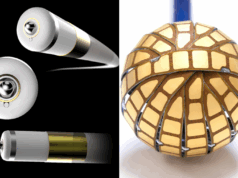
Study reveals how physical exertion may trigger sudden death in people with apparently healthy hearts.
Sudden cardiac death in sport is usually due to inherited or congenital abnormalities of the heart. But according to researchers from St George’s, University of London, UK, a large proportion of deaths also occur in anatomically normal hearts that experience sudden arrhythmic death syndrome, suggesting that many deaths are due to electrical faults.
The study results were presented by Gherardo Finocchiaro (St George’s University of London, UK) at the Young Investigators Awards Session Clinicial Science of the European Society of Cardiology Congress (ESC; 28 August – 2 September, London, UK).
Sudden cardiac death affects one in every 50,000 athletes and causes 600 deaths in young people (under 35) in the UK each year.
“The heart may appear normal to a pathologist suggesting that the cause of death was a primary electrical fault in the heart. This occurs on a molecular level and cannot be seen with the naked eye or the microscope. Such deaths are referred to as sudden arrhythmic death syndrome and are most often due to inherited faults in the electrical system of the heart.
The Brugada syndrome or some other rare electrical fault can cause gaps in the heart rhythm and trigger sudden death,” said study author Sanjay Sharma, professor of Inherited Cardiac Diseases in Sports Cardiology at St George’s University Hospital in London and medical director of the London Marathon.
The authors of the study selected 357 victims of sudden cardiac death aged between 18 and 40, who engaged in regular sport during life. They found that the most common cause of death was sudden arrhythmic death syndrome and that 61% of these deaths occurred during exercise with almost 40% after exertion or at rest.
Researchers also found that arrhythmogenic right ventricular cardiomyopathy (ARVC) and left ventricular fibrosis were also particularly common in subjects who had died during or right after exercise.
“If an athlete has ARVC, it is strongly advised that they do not take part in high level exertion since they are at high risk. Heart scarring or left ventricle fibrosis is also common in SCD but we need to understand more about this disease. More research is needed in this area.” Sharma said.
The study also confirmed that most sudden deaths occur in men, as male athletes represented 92% of all cases chosen.
The death rate in men is 9 to one for competitors and 20 to one for recreational athletes and there is no clear explanation to this phenomenon yet. In the 35 year-history of the London Marathon, the third biggest marathon in the world, only one woman has died compared to 13 men.
“Men seem to be able to push themselves harder because they have a larger muscular capacity. They are also very competitive and may ignore some warning symptoms. Women are heavily protected against heart attacks thanks to oestrogen. It is very unusual for a white woman who does not have diabetes, does not smoke or have a history of familial hypercholesterolaemia to die from a heart attack before the age of 50,” Sharma said.
In the case of sudden cardiac death with no abnormality or genetic condition, all first-degree relatives of the deceased should be tested in an expert centre to identify other family members who may be affected.
“At St George’s Hospital, if someone dies of sudden arrhythmic death syndrome and we then test their families, there is a 52% chance we will pick up a serious electrical disease in someone else in the family. Screening is therefore really important in this situation,” Sharma said.
Athletes who suddenly feel dizzy, blackout or feel their heart racing abnormally during exercise should consult a physician. Unfortunately, in 80% of cases, sudden cardiac death is the first and only symptom. Although ECG screening will identify athletes with diseases that can lead to sudden cardiac death, mass screening in athletes is not always feasible. For example, it is logistically impossible to screen all 37,700 athletes before the London Marathon, but charities now enable competitors to be screened relatively cheaply. The Cardiac Risk In The Young (CRY) charity offers testing to young people for about £30.
“Defibrillators should also be available during running or sporting events so that sufferers can be rescued on the spot”, Sharma added.









